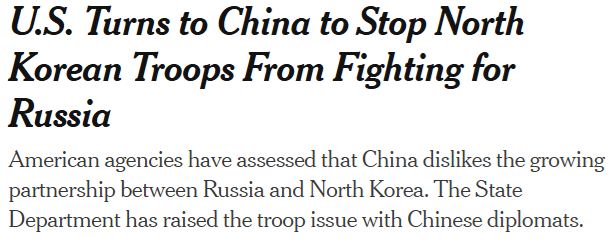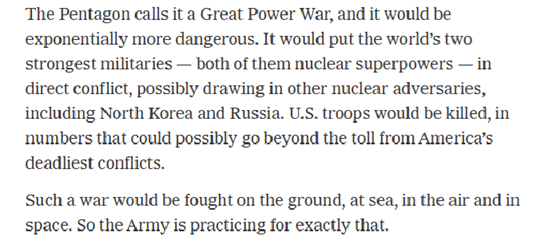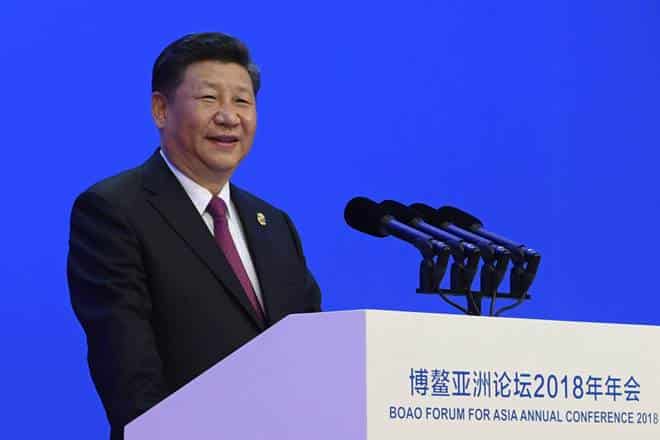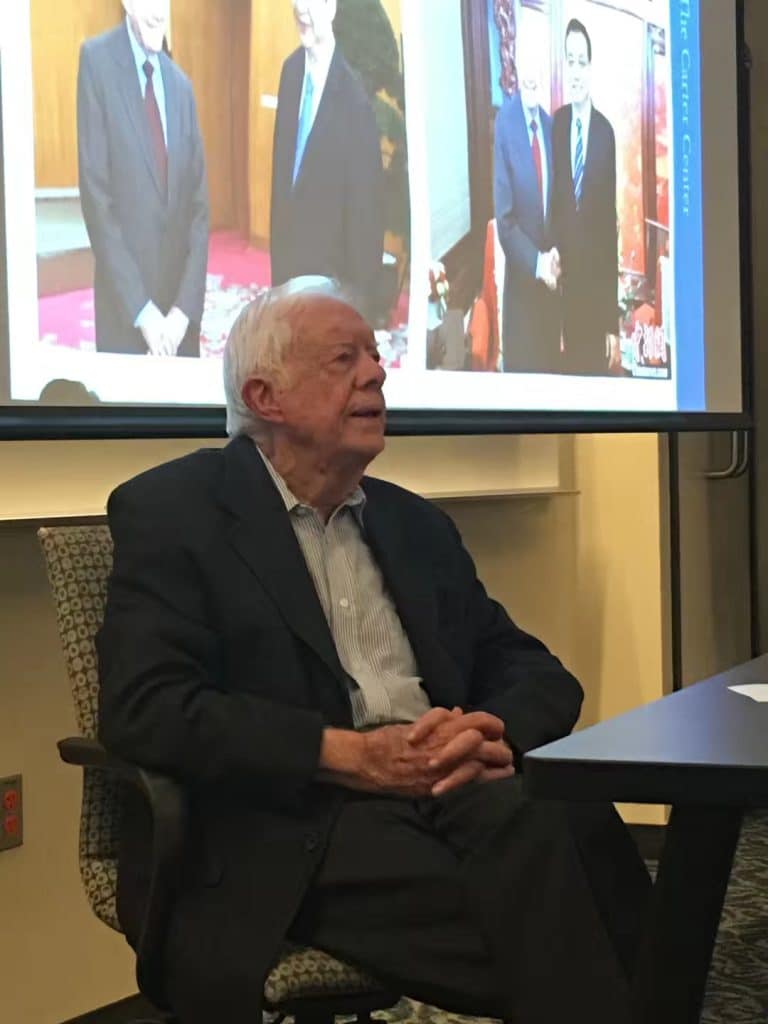Is there Room for US-China Cooperation on the Ebola Crisis? (Part I)
作者:Travis Miller 来源:US-China Perception Monitor
By TRAVIS M. MILLER October 13, 2014
As timetables for stopping the Ebola virus escalate and cost estimates skyrocket, the World Health Organization (W.H.O.) has pleaded with the international community for resources to counter the spreading disease. From non-governmental organizations (NGO’s) to United Nations (U.N.) agencies and the private sector, the W.H.O. has requested aid and expertise from every conceivable outlet in its fight to stop Ebola. The response to calls by the W.H.O. (as well as Doctors Without Borders) for assistance have been met by largely unilateral efforts, with individual states sending relief in the form of supplies and medical workers from state- organizations such as the U.S. and China’s individual Centers for Disease Control (C.D.C.). Despite the spread of the disease developing into a truly international crisis, such a global response has the potential to cross the line from effective to impeding. The very nature of disease containment when addressing infectious disease requires the utmost coordination by the parties involved. Therefore, though numerous countries have rushed to administer aid to Ebola-stricken states, a concerted and focused effort will provide the best opportunity to minimize the extent of the crisis.
Yet while states still frequently act in a unilateral manner, many global issues do require greater action than individual states are willing to take on independently. However, if states would like to act around IO’s rather than with them, and still develop capable solutions, they could do so in bilateral engagements. These engagements would satisfy two common state interests. The first is that a bilateral initiative would limit some of the bureaucratic impediments that plague of organizations like the U.N., effectively cutting out the middleman. Just as well, bilateral programs would still allow states to pursue the relations initiatives that they so often seek, presenting aid packages internationally that create headlines more akin to “Country A and Country B cooperate to provide aid to Country C”, for example, as opposed to “The W.H.O. works with Country C to provide humanitarian assistance”. The benefits of bilateral humanitarian initiatives can thus be thought of as having the potential to satisfy national interests while simultaneously providing for the strongest capacity to respond to urgent humanitarian disasters. However, the crux of bilateral engagement relies on the alignment of national interests between the cooperative nations. This can be difficult for major powers, the states that often yield the greatest raw capability to assist in international crises.
Still, such difficulty should not be mistaken for impossibility. In fact, the recent Ebola crisis in West Africa provides an exemplary case in which the national interests of two major powers, the U.S. and China, are relatively aligned. Both states are concerned about the spread of the Ebola virus, and both would benefit from containment of the disease. One state has a multitude of economic investments that are potentially threatened by a pandemic. The other, while having some economic incentive, has a frequently-espoused commitment to human welfare and global stability to uphold. This series will examine these overlapping interests of the U.S. and Chinese governments in combating the spread of Ebola in Africa. Noted will be the individual expertise of both states that could best be aimed towards achieving the containment of present and future outbreaks in the region. The concluding policy recommendation will outline potential means of cooperative humanitarian effort as well as the benefits that cooperation would instill by satisfying national interests while simultaneously enhancing the welfare of the African people.
THE SPECTRUM OF INTENTIONS
While both China and the U.S. share an interest in containing the spread of infectious disease in Africa, their intentions for doing so may perhaps remain ideologically at odds. Such circumstances are hardly unique within this complex relationship, and with U.S.-China relations come decades of misperceptions and distrust of intentions. However, the scope of potential reasons on behalf of both states for desiring a cessation to the outbreak of Ebola and other deadly disease in Africa still each arrive at a conclusion that involves humanitarian action in some capacity.
The presence of Chinese investment on the continent of Africa is becoming increasingly difficult to ignore. Last year marked a fifth consecutive year that China remained Africa’s largest trade partner, and foreign direct investment from China to Africa was measured at US$15 billion in 2012. As trade and investment by the Chinese in Africa continues to increase immensely on an annual basis, such interdependency has established a need in fostering a stable environment for economic growth to persist. Funding and construction of infrastructure (China pledged US$20 billion for such activities alone in 2013) has created a two-fold benefit for the Chinese by both creating opportunities to earn government contracts from African states while also strengthening the means by which Chinese resource industries based out of the African continent can transport materials.
Some in the West, such as the European Parliament, have rushed to declare these practices as neo-colonialist, but the opposite end of the spectrum would cite an interest by the Chinese in forging stronger relations with unique and untapped foreign markets for the exportation of goods. As Deborah Brautagam notes in The Dragon’s Gift: The Real Story of China in Africa, China’s approach is not solely focused on resource extraction but on developing business in the region. This process of the spread of capitalism is remarkably reminiscent of the Western economic ideologies advocated for hundreds of years; it is simply being conducted in exclusion of non-Western nations.
While infrastructure is crucial for industry to prosper, just as necessary are safe living conditions in which companies and workers are willing to brave thousands of miles to relocate to. With estimates of over one million Chinese currently living across the African continent, the push to attract greater business initiatives will require migrants to believe that they will prosper relatively uninhibited overseas. The Ebola crisis in West Africa has affected the ability of Chinese companies to conduct business in the region. A Chinese diplomat was quoted as claiming that while the nearly 1,500 Chinese workers in Liberia face little risk of exposure to Ebola, the disease has negatively impacted the operations of many Chinese businesses. Xue Xiaoming, vice-chairman of the Chinese Chamber of Industry and Commerce in Nigeria, stated that many potential Chinese companies looking to invest in what has become Africa’s largest economy have put existing plans on hold in response to international airlines suspending flights to Ebola-affected countries.
This economic interest may have stirred up humanitarian aid by China in combating Ebola in West Africa. The relief efforts mark a rare action on their behalf when referring to overall global Chinese humanitarian aid. While China has quickly developed into the world’s second largest economy, the state ranked 29th in 2012 in international monetary humanitarian aid, remaining in stark contrast from its Western economic equivalents in terms of assistance. The continent of Africa represents a historical anomaly in traditional Chinese humanitarian efforts. For China, the state has dispatched over 20,000 medical practitioners to Africa dating back to Mao Zedong’s regime. Chinese workers worldwide administered over 240 million medical treatments in 71 countries, 45 of which located in Africa. These efforts were curbed under Deng Xiaoping when the state turned its efforts towards intensive economic development, perhaps a signal that the previous decades of work was not simply mercantilist policy but the result of humanitarian inspiration.
From the American perspective, the amount China has donated still reflects only a fraction of U.S. humanitarian monetary assistance. Even in West Africa, the U.S. (ranked 1st in 2012 in humanitarian assistance donations) allocated US$100 million to aid in the Ebola crisis through U.S.A.I.D. (United States Agency for International Development) as of September 2014, with congress assessing whether to send an additional amount in the form of C.D.C. personnel and equipment that would bring the overall total of U.S. aid to US$250 million. This is despite not possessing the same breadth of business interests as China in the region (only trading at a rate of nearly half that of China within the continent). However, the organizational purposes of U.S.A.I.D., “to end extreme poverty and to promote resilient, democratic societies while advancing our security and prosperity”, reflect the myriad of intentions behind humanitarian aid donations backed by the U.S. government. Indeed, criticism has been levied against the American government from multiple angles, accusing the U.S. of overseeing the distribution of aid only to favorable regime-types or attaching political structural adjustment requirements in order to become a recipient. Still, regardless of motivations, both states have seemingly formed a stake in aiding the West African nations.
In the next part of this series, the expertise of both China and the U.S. in disease containment/prevention will be outlined to demonstrate the overlap of medical proficiencies.
NOTE: The content of this work is the author’s opinion and does not reflect the position of the Carter Center.
REFERENCES
“Assessed Contributions Payable by Member States and Associate Members – 2012 2013.” (n.d.): n. pag. WHO. World Health Organization. Web. 08 Sept. 2014.
Brautigam, Deborah. The Dragon’s Gift: The Real Story of China in Africa. Oxford: Oxford UP, 2009. Print.
Caulderwood, Kathleen. “Ebola Outbreak 2014: China Adds To International Aid Efforts.” International Business Times. N.p., 03 Sept. 2014. Web. 04 Sept. 2014.
Chakma, Justin, Gordon H. Sun, Jeffrey D. Steinberg, Stephen M. Sammut, and Reshma Jagsi. “Asia’s Ascent — Global Trends in Biomedical R&D Expenditures.” NEJM.org. The New England Journal of Medicine, 02 Jan. 2014. Web. 09 Sept. 2014.
Chan, L. H., P. K. Lee, and G. Chan. “China Engages Global Health Governance: Processes and Dilemmas.” Global Public Health 4.1 (2009): 1-30. Web.
“China Helps Africa Fight against Ebola Epidemic – CCTV News – CCTV.com English.” China Helps Africa Fight against Ebola Epidemic – CCTV News. China Central Television, 13 Aug. 2014. Web. 08 Sept. 2014.
“Chinese Researchers Develop H7N9 Flu Vaccine.” CCTV News. China Central Television, 26 Oct. 2013. Web. 04 Sept. 2014.
“Fast Facts: United States Travel and Tourism Industry – 2013.” National Travel and Tourism Office (2014): n. pag.Travel.trade.gov. National Travel and Tourism Office, May 2014. Web. 08 Sept. 2014.
“Fever Rising.” The Economist. The Economist Newspaper, 16 Aug. 2014. Web. 09 Sept. 2014.
Finley, JC. “WHO: Ebola Outbreak Can Be Stopped in 6-9 Months.” UPI. N.p., 03 Sept. 2014. Web. 09 Sept. 2014.
FlorCruz, Michelle. “China’s Response To H7N9 Bird Flu Is Rapid, Unlike Previous SARS Epidemic.” International Business Times. N.p., 05 Apr. 2013. Web. 08 Sept. 2014.
Global Humanitarian Assistance Report 2013. Rep. Global Humanitarian Assistance, n.d. Web. 04 Sept. 2014.
Knobler, Stacey. Learning from SARS: Preparing for the next Disease Outbreak: Workshop Summary. Washington, DC: National Academies, 2004. Print.
Lianxing, Li. “Outbreak Making Chinese Investors Skittish.” Asia News Network. N.p., 21 Aug. 2014. Web. 08 Sept. 2014.
Osborne, Hannah. “H7N9 Bird Flu ‘One of Most Lethal Influenza Viruses’ and Greater Risk than H5N1 [VIDEO].” International Business Times RSS. N.p., 24 Apr. 2013. Web. 04 Sept. 2014.
Silver, Nate. “Role Models.” The Signal and the Noise: Why so Many Predictions Fail–but Some Don’t. New York: Penguin, 2012. N. pag. Print.
“Summary of Probable SARS Cases with Onset of Illness from 1 November 2002 to 31 July 2003.” WHO. World Health Organization, n.d. Web. 08 Sept. 2014.
Sun, Lena H., and Juliet Eilperin. “Obama: U.S. Military to Provide Equipment, Resources to Battle Ebola Epidemic in Africa.”Washington Post. The Washington Post, 07 Sept. 2014. Web. 09 Sept. 2014.
Tiezzi, Shannon. “Armed With SARS Lessons, China Fights H7N9 Bird Flu.” The Diplomat. N.p., 07 Dec. 2013. Web. 09 Sept. 2014.
“The Top 100 NGOs 2013.” The Global Journal 15 (2013): n. pag. Print.
来源时间:2018/4/5 发布时间:2014/10/13
旧文章ID:15797







